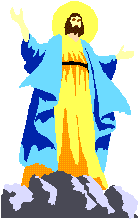There Goes the SunBy Richard CohenSacrifice is a common thread. In areas of northern Pakistan, men have cold water poured over their heads in purification, and are forbidden to sit on any chair till the evening, when their heads will be sprinkled with goats’ blood. (Unhappy goats.) Purification is also the main object for the Zuni and Hopi tribes of North America, their attempt to recall the sun from its long winter slumber. It also marks the beginning of another turning of their “wheel of the year,” and kivas (sacred underground ritual chambers) are opened to mark the season.And:
The turning of the sun was perhaps even more important in the New World than the Old. The Aztecs, who believed that the heart harbored elements of the sun’s power, ensured its continual well-being by tearing out this vital organ from hunchbacks, dwarves or prisoners of war, so releasing the “divine sun fragments” entrapped by the body and its desires.
The Incas would celebrate the solar festival of Inti Raymi by having their priests attempt to tie down the celestial body. At Machu Picchu, high in the Peruvian Andes, there is a large stone column called the Intihuatana, (“hitching post of the sun,”) to which the star would be symbolically harnessed. It is unclear how the Incas measured the success of this endeavor, but at least the sun returned the following day.Compare these to equally colorful beliefs in the West:
In Christendom, the Nativity gradually absorbed all other winter solstice rites, and the co-opting of solar imagery was part of the same process. Thus the solar discs that had once been depicted behind the heads of Asian rulers became the halos of Christian luminaries. Despite the new religion’s apparent supremacy, many of the old customs survived—so much so that church elders worried that the veneration of Christ was being lost. In the fifth century, St. Augustine of Hippo and Pope Leo the Great felt compelled to remind their flocks that Christ, not the sun, was their proper object of their worship.
While Roman Christianity was the dominant culture in Western Europe, it was by no means the only one. By millennium’s end, the Danes controlled most of England, bringing with them “Yule,” their name for winter solstice celebrations, probably derived from an earlier term for “wheel.” For centuries, the most sacred Norse symbol had been the wheel of the heavens, represented by a six- or eight-spoked wheel or by a cross within a wheel signifying solar rays.
The Norse peoples, many of whom settled in what is now Yorkshire, would construct huge solar wheels and place them next to hilltop bonfires, while in the Middle Ages processions bore wheels upon chariots or boats. In other parts of Europe, where the Vikings were feared and hated, a taboo on using spinning wheels during solstices lasted well into the 20th century. The spinning-wheel on which Sleeping Beauty pricks her finger may exemplify this sense of menace.Comment: For more Native versions of holidays, see
Native Ornaments on "History Tree" and
41st National Day of Mourning.
Below: Primitive sun/son worship.



No comments:
Post a Comment
Note: Only a member of this blog may post a comment.